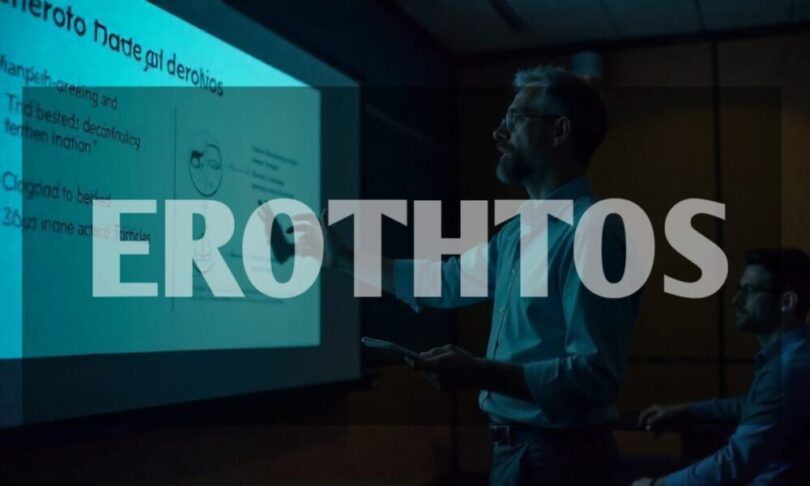In the vast landscape of mythology and linguistic curiosities, few words spark intrigue like Erothtos. Though seemingly esoteric, Erothtos evokes a realm of powerful imagery and symbolic significance. Whether interpreted as a mythical concept, a metaphor for inner transformation, or a poetic term with hidden cultural roots, Erothtos offers a rich tapestry of meaning that blends passion, evolution, and the timeless dance between light and shadow.
Origins and Etymology
While Erothtos does not appear in traditional Greek or Latin lexicons, its structure hints at Hellenistic inspiration. It resembles the fusion of “Eros,” the Greek god of love and desire, with a suffix suggesting an abstract or elevated state, possibly echoing terms like “pathos” or “thanatos.” This linguistic resemblance has led scholars and speculative enthusiasts to interpret Erothtos as a symbolic term—perhaps an invented word designed to invoke deep emotion, transformation, or metaphysical intensity.
Some suggest that Erothtos might derive from an ancient oral tradition or a forgotten dialect, passed down in poetic verses or regional folklore. Others argue it is a neologism born in modern mythopoetic writing, constructed to convey layered meanings that transcend literal translation.
Erothtos as a Mythical Archetype
Interpreting Erothtos as a mythological figure opens a window into a symbolic narrative rich with archetypal themes. If Eros represents desire and creation, and Thanatos represents death and dissolution, then Erothtos could be seen as the integration of both forces—an entity embodying transformational passion.
In this view, Erothtos could be imagined as a mythic figure that governs not just erotic desire but the alchemy of the self—the inner fires that burn away what is no longer needed and refine the soul into something more whole. Such a figure might be worshipped or revered in secret rites or mystery schools, guiding initiates through cycles of death, rebirth, ecstasy, and enlightenment.
In some artistic renderings or fictional interpretations, Erothtos has been portrayed as a god or spirit with dual natures—both male and female, nurturing and destructive. These portrayals echo ancient deities like Shiva in Hinduism or the Aztec Quetzalcoatl, where creation and destruction are intertwined forces.
Philosophical Symbolism
Beyond myth, Erothtos serves as a potent symbol in philosophical discourse, especially within the realms of existentialism, depth psychology, and metaphysics. It encapsulates the human struggle to reconcile opposing inner drives: the desire for pleasure, connection, and immortality versus the inevitable confrontation with loss, transformation, and mortality.
In this sense, Erothtos could be considered the philosopher’s flame—a word that reflects our longing to evolve while acknowledging that every growth requires a shedding of the old self. It is passion with purpose, eros intertwined with logos. It is also reflective of Carl Jung’s process of individuation, where integration of the shadow leads to a more unified and authentic self.
Erothtos in Literature and Art
Writers and artists have long been drawn to themes that might fall under the umbrella of Erothtos, even if they never use the word directly. The works of Rainer Maria Rilke, for instance, are saturated with a yearning to embrace the beauty and terror of transformation. Rilke’s famous phrase, “For beauty is nothing but the beginning of terror,” encapsulates the essence of Erothtos—the sense that what we desire most also has the power to undo us.
In visual arts, the theme of passionate destruction leading to rebirth is a recurring motif. From Klimt’s sensual paintings to the symbolic metamorphoses in surrealist art, Erothtos finds form in figures suspended between worlds—half-human, half-spirit; half-decayed, half-reborn.
In contemporary literature, authors have invoked similar energies in fantasy and science fiction, where characters must pass through trials of desire and self-annihilation to emerge transformed. The hero’s journey is, in many respects, a path of Erothtos—each descent into the abyss followed by a renewal.
Erothtos and Modern Culture
In the age of self-discovery, therapy, and spiritual awakening, Erothtos resonates more than ever. It embodies the idea that true healing comes not from avoiding pain, but from engaging it fully—with openness and heart. The concept speaks to people exploring tantra, sacred sexuality, shadow work, and rites of passage. It is also relevant in art therapy, where expression becomes a form of catharsis and regeneration.
The word has started to gain traction in niche communities—poets, musicians, and mystics who see in Erothtos a term that encapsulates their inner odyssey. It’s not uncommon to see Erothtos used as a pseudonym, a concept album title, or a name for a meditation retreat focused on transformational intimacy.
Social media platforms have also seen the emergence of Erothtos-inspired aesthetics—dark florals, alchemical symbols, handwritten poetry over blurred portraits—where vulnerability, sensuality, and mysticism merge.
Erothtos as a Personal Journey
At its core, Erothtos can be viewed not just as a myth or a word, but as a pathway—an internal experience each person undergoes at various life stages. When a relationship ends, when a career path dissolves, when identity is stripped down by crisis, Erothtos is the fire that both wounds and illuminates.
To walk the path of Erothtos is to accept that longing is not weakness, that transformation is not always gentle, and that beauty often walks hand-in-hand with sorrow. It is the recognition that passion, when fully embraced, is a sacred teacher.
Many find their Erothtos moment in their 30s and 40s—when the illusions of youth give way to the deeper yearning for purpose, authenticity, and spiritual clarity. Others encounter it through grief, childbirth, artistic creation, or loss. Wherever it appears, Erothtos invites the individual to rise from ashes—not polished or perfect, but radiant and real.
Conclusion
Erothtos remains an enigmatic yet evocative concept—a mythical force, a poetic metaphor, a personal crucible. Whether seen as a symbolic deity, a psychological state, or a creative muse, Erothtos holds power precisely because it is undefinable. It asks more questions than it answers, nudging us toward deeper exploration of what it means to be alive, to love, to suffer, and to evolve.
In an age that often seeks quick fixes and surface-level satisfaction, Erothtos calls us to the depths—to burn brightly, to be undone, and to rise again.





